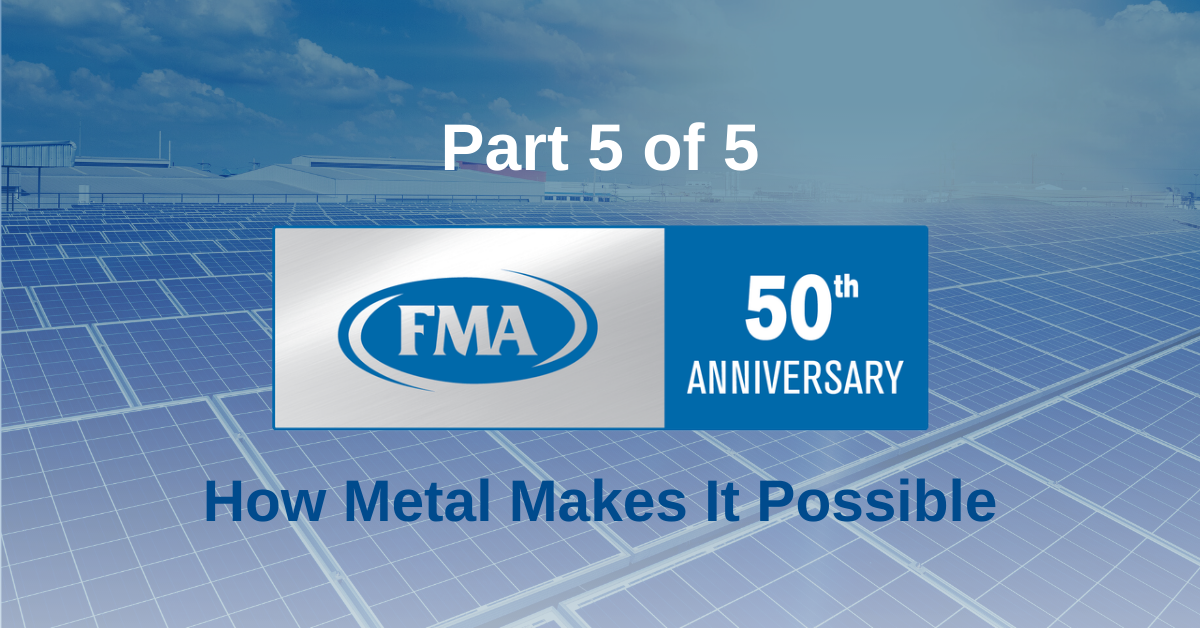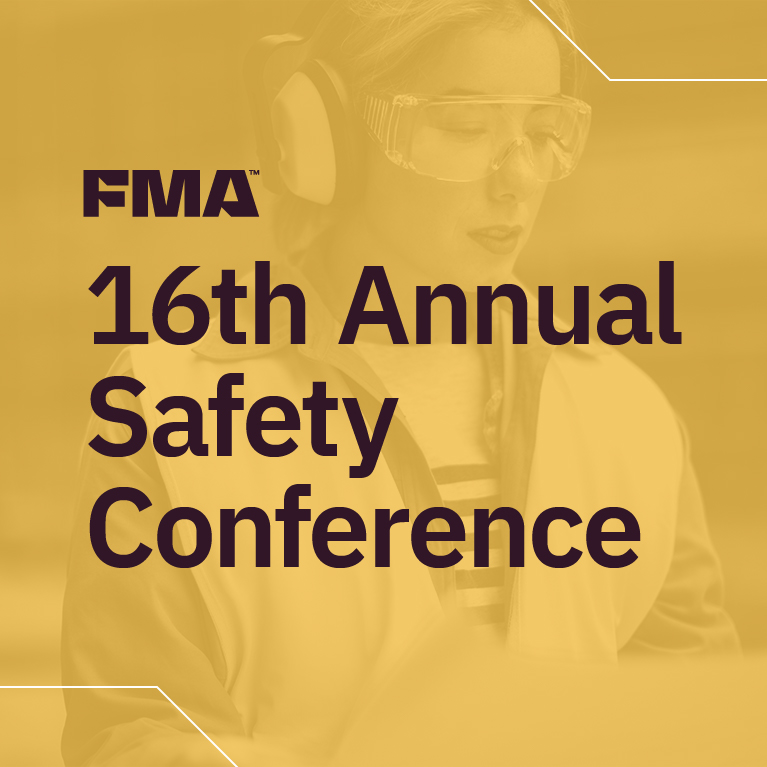New Energy to Be Built on a Foundation of Metal Fabricating
By Dan Davis | September 3, 2020
Category:
This year is FMA’s 50th anniversary! Over the last five decades, FMA has helped thousands of metal fabrication professionals advance their careers and the industry. In the final installment of this blog series, we’re looking at the future of the solar industry and how metal fabricators are laying the groundwork for it.
The final installment of a five-part blog series
A visit to Cres Cor during The FABRICATOR®’s 2017 Technology Summit revealed the potential of new energy, in this case solar.
The Mentor, Ohio-based manufacturer of commercial cooking and warming products for the foodservice industry installed 1,320 solar panels in a 70,000-square-foot fenced-off field behind its headquarters in Q1 2016. The solar panels were expected to generate 40% of Cres Cor’s overall energy needs at the time. After financing the project over a 10-year span, the firm expected the savings to drop directly to the bottom line in 2026.
Admittedly, federal tax credits at the time spurred the project, but the end result is operational savings for the food equipment manufacturer and a cleaner environment for all. That’s not a bad investment.
That’s also the likely future. As solar and battery technology improves and becomes less expensive, home- and business-owners have more motivation to jump off the municipal energy grid. (Well, that statement is a bit false because in many instances, such as the Cres Cor installation, if the solar panels are collecting energy and it’s not being used, the energy is fed directly back into the grid. The electric meter actually runs backward.)
New energy means new opportunities for metal fabricators
Many metal fabricators have recognized this shift over the years, not because they have made the leap themselves, but because they have been heavily involved in manufacturing support systems for these solar panels. After all, these sophisticated energy-collecting panels can’t simply be leaned against a storage shed for maximum efficiency. They need to be placed on sturdy support to withstand high winds and snow and ice buildup.
Some projects may not call for hundreds of support structures. In these instances, a metal fabricator with fiber laser cutting machines and high-precision press brakes can work with various thick metals to fabricate complex structures that can be made in a matter of days. Some shops even have laser tube cutting machines, which introduces a new element to the support design, maybe even reducing the amount of welding. That’s the kind of expertise that metal fabricators can bring to a project like this, from building the first prototype to helping with the full-scale product.
If a solar project is much larger than a single installation, roll forming shops can help. These companies specialize in high-volume production of metal shapes that typically are long in nature, like a support beam. Usually fed off a coil, the metal strip is passed through consecutive sets of rolls, with each performing an incremental bend until the desired cross-section profile is obtained. This process is still used today to produce door frames and fence posts.
Whatever the case may be, metal fabricators are going to be the foundation on which solar energy grows in the coming years. According to a recent report from the Solar Energy Industries Association, the U.S. installed 3.6 GW of solar photovoltaic capacity in Q1 2020 to reach 81.4 GW of total installed capacity, enough to power 15.7 million homes. The same organization states that solar has ranked first or second in new electricity capacity additions in each of the last seven years. Just last year, 40% of all new electricity capacity added to the nation’s energy grid came from solar, the largest share in history. The future looks bright for solar, which means there’s a real opportunity for metal fabricators positioned to take advantage of this push to renewable energy.
About the Author

Dan Davis
Dan Davis is editor-in-chief of The Fabricator, the industry's most widely circulated metal fabricating and forming magazine, and its sister publications The Tube & Pipe Journal, and The Welder. He has been with the publications since April 2002. He has written about U.S. manufacturing trends and issues for more than 20 years. Before coming to The Fabricator he covered appliance manufacturing, the finishing industry, and manufacturing and business software development. As a trade journal editor he has traveled extensively throughout the U.S. and Europe, visiting manufacturing facilities and attending the world's most important manufacturing events. He is a 1990 Louisiana State University journalism graduate. He lives with his wife and two children in Crystal Lake, Ill.

Side by side, we move metal fabrication forward.
FMA unites thousands of metal fabrication and manufacturing professionals around a common purpose: to shape the future of our industry, and in turn shape the world.
Learn More About FMA


